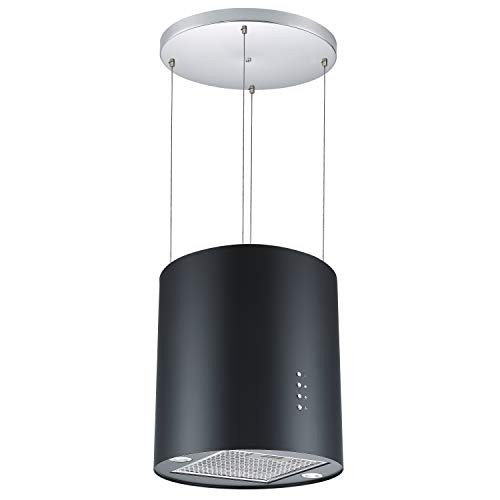
Extractor Fan Hood
FollowOverview
-
Founded Date July 11, 1916
-
Sectors Legal and Compliance
Company Description
Say “Yes” To These 5 Extractor Hood Tips
The Ultimate Guide to Cooker Extractor Hoods: Clean Air and Cooking Efficiency Made Easy
In today’s kitchens, performance and looks go together. One vital element that typically takes center stage is the cooker extractor hood. These kitchen appliances not just boost the visual appeal of a cooking area but likewise play a crucial function in keeping air quality. In this extensive guide, we will explore the various types of cooker extractor hoods, their advantages, installation factors to consider, and upkeep pointers.

What is a Cooker Extractor Hood?
A cooker extractor hood, frequently referred to as a range hood, is a device set up above the cooking surface area. Its main function is to ventilate the kitchen by removing smoke, steam, heat, and cooking smells. It can likewise help remove grease particles that might pick surfaces, hence enhancing the general tidiness of the kitchen.
Why Do You Need a Cooker Extractor Hood?
- Air Quality Improvement: Removes hazardous smoke and impurities from the air.
- Smell Control: Prevents the sticking around odor of food from taking control of your home.
- Grease Reduction: Minimizes grease build-up on cabinets and counter tops.
- Cooking Efficiency: Helps preserve a comfortable cooking temperature.
Types of Cooker Extractor Hoods
Cooker extractor hoods come in numerous designs and performances. The best option will depend upon your kitchen design, area, and cooking practices.
1. Wall-Mounted Hoods
Description: These hoods are installed directly to the wall above the cooking location. They are popular for their aesthetic appeal and performance.
Pros:
- Stylish style options.
- Offered in different sizes.
Cons:
- Requires enough wall space.
2. Island Hoods
Description: Installed above an island cooktop, these hoods are suspended from the ceiling.
Pros:
- Provides a centerpiece in open kitchen designs.
- Effortlessly catches smoke and steam from all angles.
Cons:
- Typically more expensive.
- Requires ceiling assistance.
3. Under-Cabinet Hoods
Description: These compact hoods fit underneath the cabinet above the stove.
Pros:
- Space-saving design.
- Easy to install.
Cons:
- Limited extraction power.
4. Downdraft Hoods
Description: Integrated into the cooking surface, downdraft hoods rise when in use and pull back when not required.
Pros:
- Sleek and inconspicuous style.
- Excellent for kitchens with restricted headspace.
Cons:
- Usually less powerful than traditional hoods.
5. Built-In Hoods
Description: Custom-fitted into cabinetry, built-in hoods blend effortlessly with the kitchen decor.
Pros:
- Aesthetic flexibility.
- Can be tailored to specific kitchen styles.
Cons:
- Installation can be intricate and pricey.
| Kind of Hood | Pros | Cons |
|---|---|---|
| Wall-Mounted | Trendy alternatives, several sizes. | Needs wall area. |
| Island | Centerpiece, captures from all angles. | More pricey, needs ceiling support. |
| Under-Cabinet | Space-saving, easy to install. | Limited extraction power. |
| Downdraft | Streamlined design, good for tight areas. | Less effective. |
| Integrated | Visual flexibility, custom fit. | Complex installation. |
Key Features to Consider
When selecting a cooker extractor hood, various features can impact its performance and convenience. Here are some to keep in mind:
-
Suction Power (CFM): Measured in Cubic Feet per Minute (CFM), this suggests how efficiently the hood can get rid of air. Higher CFM scores typically suggest much better suction.
-
Sound Level (Sonnes): Noise is another crucial element. Search for hoods that offer quieter operation, generally rated under 60 sones for an ideal cooking experience.
-
Filters: Consider whether the hood uses charcoal filters (for recirculating designs) or aluminum baffle filters (for ducted models). Easily replaceable filters streamline maintenance.
-
Ducted vs. Ductless: Ducted hoods vent air outside, while ductless hoods filter air and recirculate it back into the kitchen. Each has its advantages, depending on the kitchen’s layout.
-
Control Panels: Look for instinctive controls like touch panels or push-button controls for ease of operation.
Installation Considerations
Correct setup is critical for the effectiveness of a cooker extractor hood. Here are vital pointers:
- Height from Cooktop: Most producers suggest an installing height of 26 to 30 inches above the cooking surface area.
- Ducting: Ensure that ductwork is appropriately sized and set up to promote effective air flow.
- Expert Installation: If unsure, employing a specialist can guarantee the hood is installed correctly.
Upkeep Tips
To keep your cooker extractor hood working optimally, follow these maintenance ideas:
- Clean Filters Regularly: Depending on usage, filters should be washed or changed every 1-3 months.
- Clean Down Exterior: Use a non-abrasive cleaner to keep the outdoors gleaming.
- Check Vent Ducts: Ensure ducts are totally free of obstructions and debris.
- Inspect for Grease Build-Up: Regularly examine the fan and blower system to prevent grease accumulation.
Regularly Asked Questions (FAQ)
1. How frequently should I clean my cooker extractor hood?
- It’s recommended to clean filters every 1-3 months, while the exterior can be cleaned up as required, usually every few weeks.
2. Can I set up a cooker extractor hood myself?
- While some models may be uncomplicated, it’s recommended to hire an expert to guarantee appropriate installation for ideal performance.
3. What is the perfect CFM for a cooker extractor hood?
- A good general rule is to have 600 CFM for heavy cooking designs and 300-400 CFM for lighter cooking.
4. Should I pick a ducted or ductless hood?
- If your kitchen enables it, a ducted hood is usually more efficient. Nevertheless, if ducting is not possible, a ductless option can supply sufficient filtering.
5. Do cooker extractor hoods make sounds?
- Yes, all cooker extractor hoods produce some noise. However, models created with noise-reduction features can run more quietly.
Selecting the best cooker extractor hood can considerably boost your kitchen experience by enhancing air quality, lowering odors, and keeping cleanliness. Understanding the different types, features, and maintenance needs will empower property owners to make an educated decision customized to their cooking routines and kitchen layout. As kitchens continue to develop into practical home, an effective cooker extractor hood is not just a luxury– it is a requirement.
